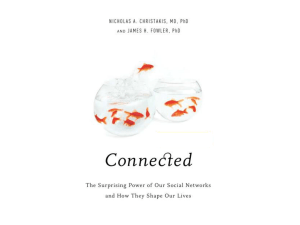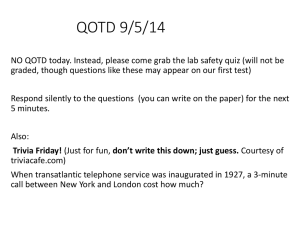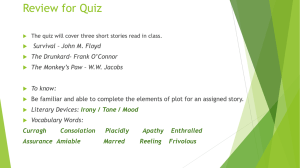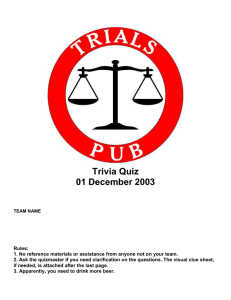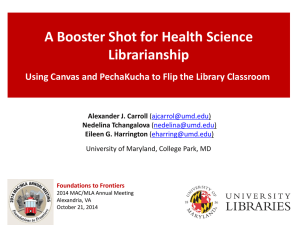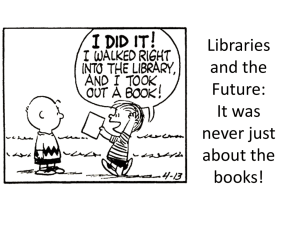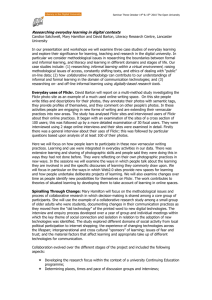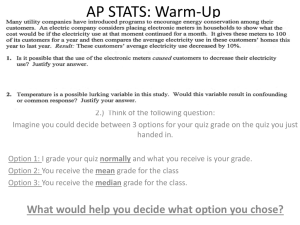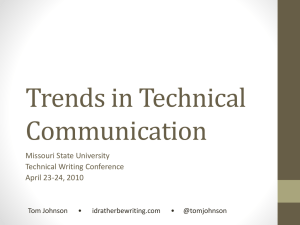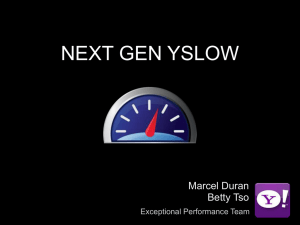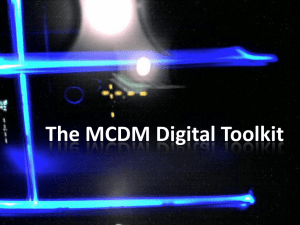Presentation - E
advertisement
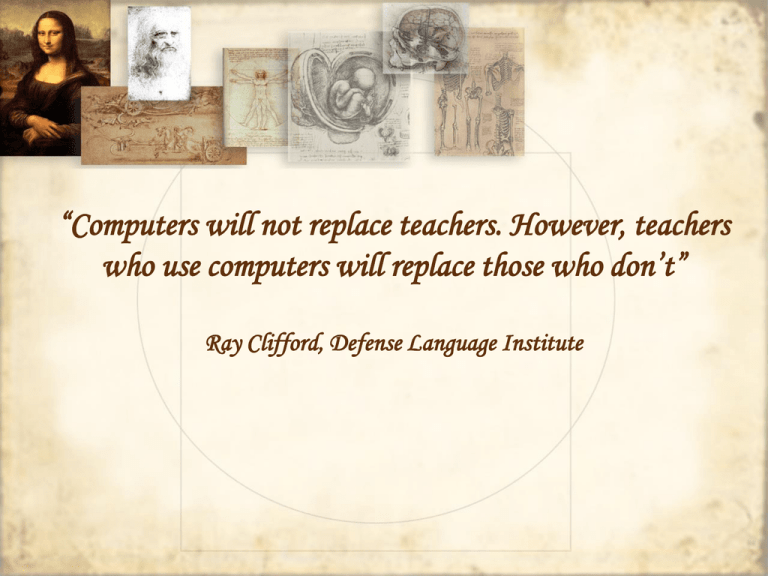
“Computers will not replace teachers. However, teachers who use computers will replace those who don’t” Ray Clifford, Defense Language Institute What is “Educational Technology”? Educational technology is a combination of the processes and tools involved in addressing educational needs and problems, with an emphasis on applying the most current tools: computers and their related technologies The evolution of computers A SHORT COMPUTER STORY An analogue computer 1960 5MB Hard Disk 1956 A Punch card The first computer mouse underside view held by inventor Douglas Engelbart Early Days of CALL CALL was influenced by Skinner’s “programmed learning” CALL revolves around presenting and testing forms Early Days of CALL Parallel Evolution of Technology and CALL 1960s -70s ‘Behaviouristic CALL’ Mainframe technology 1970s - 90s ‘Communicative CALL’ PC technology 1990s - ‘Integrative CALL’ (task-based, projectbased and content-based integrated into the curriculum) Multimedia networked computer technology Warschauer, M., & Healey, D. (1998). Computers and language learning: An overview. Language Teaching, 31, 57-71 Approaches to CALL CONTENT TASK POSITION IN CURRICULUM Restricted CALL Drills, Quizzes Optional extra Open CALL Simulations, Games Toy, Optional extra Integrated CALL CMC, email Tool for Learning, Normalised Bax, S. (2003). CALL–Past, present and future. System, 31, 13-28 The Evolution of CALL 1980-1995 CRUDE CALL 1995-2005 TASKBASED REFINED CALL 2005TODAY CALL 2.0 Educational Software can be… Authorable or Non-authorable CALL can be employed… in Synchronous or Asynchronous mode New/Digital literacies computer literacy (comfort and fluency in keyboarding and using computers) information literacy (the ability to find and critically evaluate online information) multimedia literacy (the ability to produce and interpret complex documents comprising texts, images, and sounds) computer-mediated communication literacy (knowledge of the pragmatics of individual and group online interaction) New Literacies Multimodality in communication services Read/Write web (Web 2.0) Encyclopaedia Britannica Britannica online Wikipedia Publication vs. Participation Digital natives vs. digital immigrants Two different perspectives “English is not an end in itself, but just a tool for being able to make use of information technology” “Both English and information technology are tools to allow individuals to participate fully in society” What else can I do with the Internet? Example Activities Trivia Quiz (level: Lower-Intermediate) Source: The Internet and the Language Classroom, Gavin Dudeney, CUP 2000 Sites needed: www.google.com, www.yahoo.com, www.ask.com Materials: A sheet with a trivia quiz (maybe two or three different quizzes for different groups) Trivia Quiz What’s the name of the President of the US? Who invented the aspirin? How many players are there in a baseball team? What’s the capital of Australia? What’s the weather like in Paris today? How many albums has Britney Spears recorded? What product is Jamaica famous for? Which film won the Oscar for Best Picture in 1996? Who was the first person in space? Who wrote One Hundred Years of Solitude? Trivia Quiz Lesson Plan Introduce Search Engines In groups let students finish the trivia quiz (maybe in limited time as a competition for extra motivation) Let students prepare a trivia quiz themselves (and practise question forms) Blogs WEBLOGS Blogs (Weblogs) Easy to setup Easy to update Interactive Multiple authors allowed The above lead to… o Flexible aims o Content and purpose modification www.blogger.com/start Blogs - Applications Class portal (online filing cabinet, publishing projects, store materials) E-Portfolio Collaborative Space A New Writing Genre: “Connective writing” Posting Assignments Journaling (“This is what I did today”) Links with descriptive annotation (teach students how to describe websites and ask them to find interesting sites of information) Links with analysis of content FLICKR Flickr.com Publishing photos Annotating published photos Inviting visitors to add comments Setting up groups of students to publish photos on a given topic Flickr in class Real life use of photos to communicate with people Publishing a photo requires some writing on the part of the author Title, short desciprtion Key words (to help visitors find the photo and comment on it) Comments on the photos www.flickr.com/photos/27803538@N05/2595183772 WEBQUESTS Parts of a Webquest introduction task (the problem) resources Process (activities and research tasks) guidance conclusion Wallwisher http://www.freetech4teachers.com/
